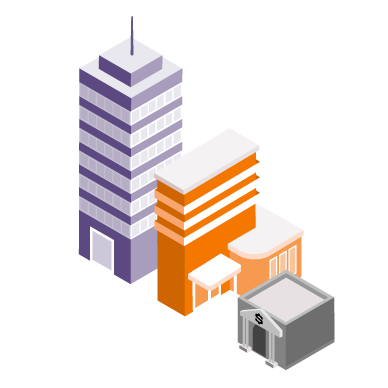 2018 CBECS: Principal Building Activities
2018 CBECS: Principal Building Activities
Office
Office buildings are used for general office space, professional offices, and administrative offices. Medical offices are included here if they do not use any type of diagnostic medical equipment (if they do, they are categorized as an outpatient health care building).

We publish six subcategories of office buildings:
- Administrative or professional
- Bank or other financial
- Government
- Medical (non-diagnostic)
- Mixed-use
- Other office, which includes buildings such as call centers and contractors’ offices
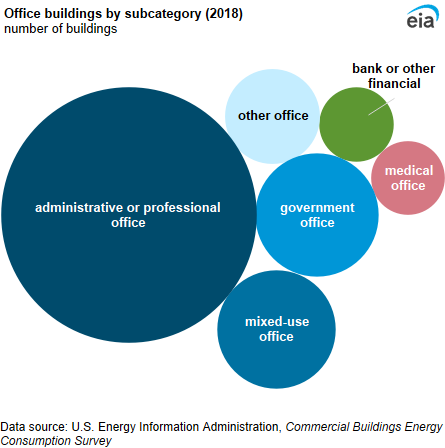
Administrative or professional office buildings were the most common (57%) office building type. Government offices (13%) and mixed-use office buildings (12%) were the second- and third-most common office building types.
Although the average office building was 17,200 square feet, more than one-half (53%) of office buildings were between 1,000 square feet and 5,000 square feet. Less than 1% of office buildings were greater than 500,000 square feet.
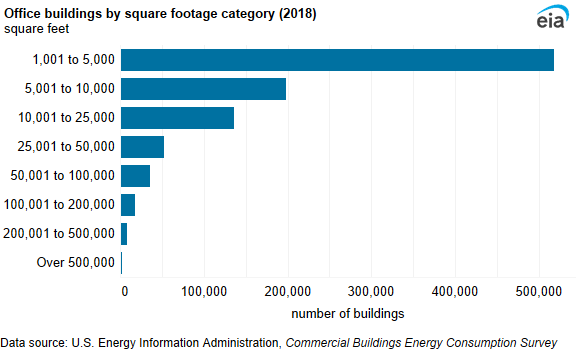
The majority of office buildings were not tall—56% of office buildings had only one floor and 84% had one or two floors. Less than 1% of buildings were 10 floors or more.

About one-third (35%) of office buildings were on a multibuilding campus or complex. The majority of office buildings (82%) were not government owned.
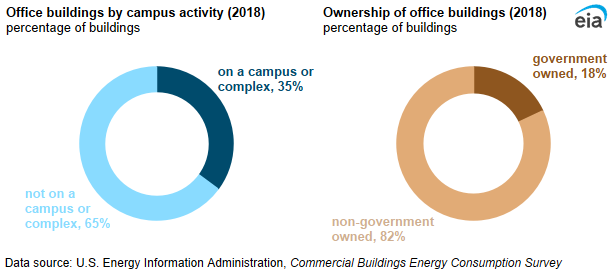
Energy use in office buildings
Office buildings used 1,093 trillion British thermal units (TBtu) of energy in 2018. Office buildings accounted for 17% of total commercial floorspace and 16% of energy consumption in commercial buildings. Electricity was the most-used fuel (775 TBtu), followed by natural gas (250 TBtu). The mean energy intensity for office buildings was 65.6 thousand British thermal units (MBtu) per square foot.
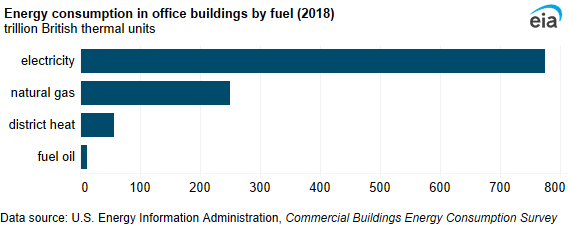
Administrative or professional office buildings, which accounted for 57% of office buildings, made up a similar percentage (54%) of energy consumption. Mixed-use office buildings accounted for the second-largest share of energy consumption (23%).
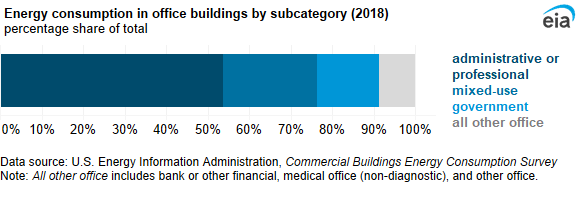
Office buildings, which were the second-most common commercial building type, accounted for the largest share of consumption for several end uses, including ventilation, office equipment, and computing. Space heating accounted for the largest share of end-use consumption in office buildings (30%). At least 10% of end-use consumption was for ventilation (20%), other (17%), and lighting (12%). All other end uses each accounted for 8% or less of end-use consumption.
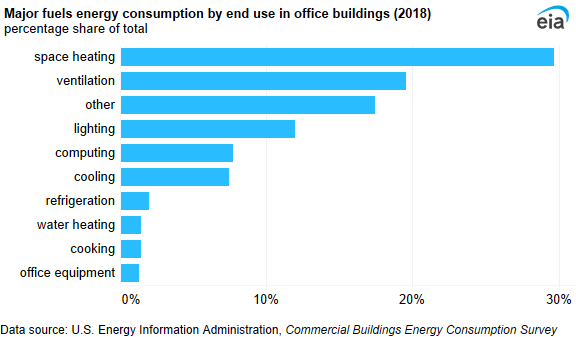
Energy intensity was highest for space heating (20.1 MBtu per square foot) and lowest for office equipment (0.8 MBtu per square foot).
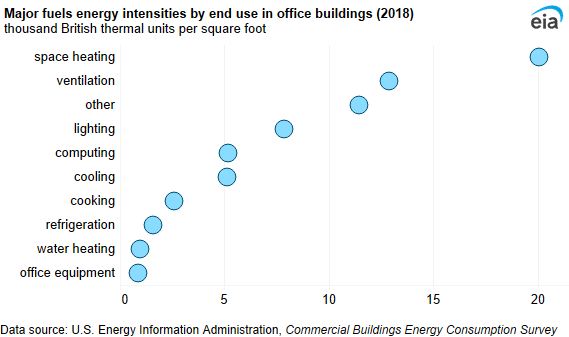
Inside office buildings
Packaged heating units were the most common heating equipment in office buildings (43%). Furnaces were the second-most-used heating equipment (32%).
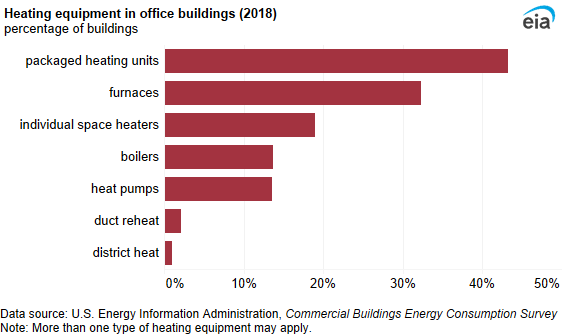
Packaged air conditioners were the most common cooling equipment in office buildings (52%). Residential-type central air conditioners were the second-most-used cooling equipment (33%).
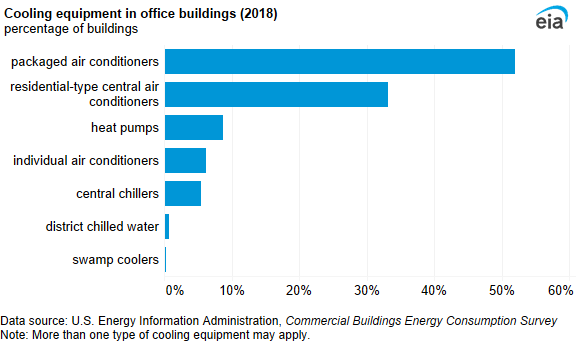
Office equipment such as desktops, laptops, and small office devices were more widely used in office buildings. The majority of office buildings had at least one desktop computer (93%), laptop (69%), or small office device (81%). Tablets that were charged in the building and large office devices (printers, copiers, scanners, or fax machines) were used less—64% of office buildings did not have any tablets charged in the building, and 49% did not have any large office devices. Televisions or video displays were used in 47% of office buildings.
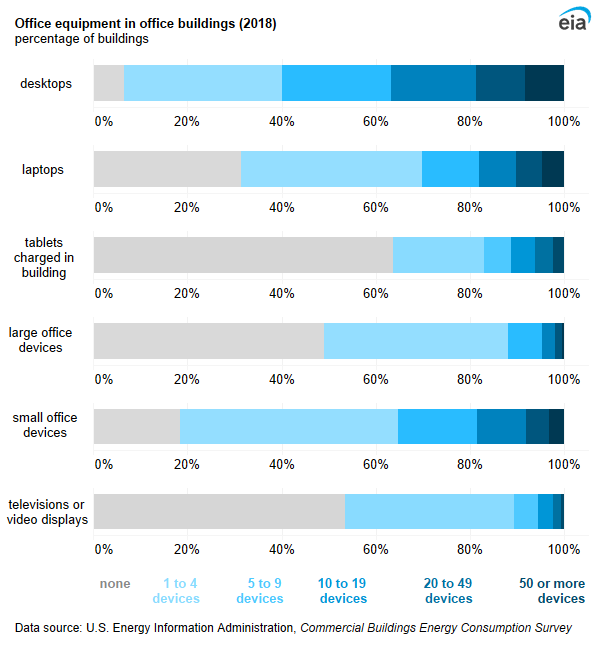
Residential-type or compact refrigeration units were the most-used refrigeration equipment in office buildings (73%).
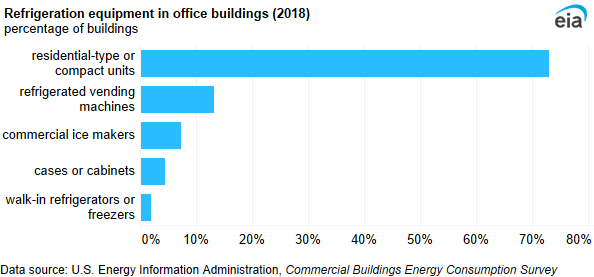
Small kitchen areas were the most common food preparation or serving area in office buildings (19%). All other types of food preparation or serving areas were used in 1% or less of office buildings.
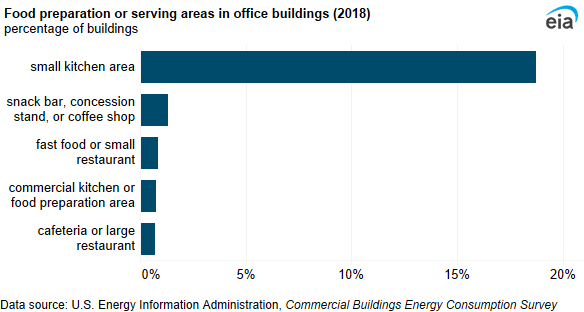



 /p>
/p>